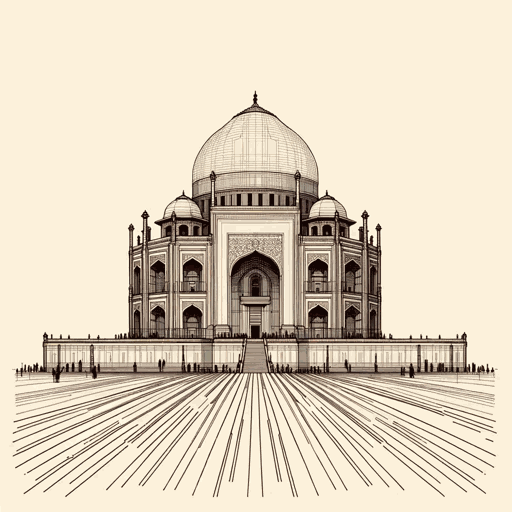27 pages • 54 minutes read
Mahatma GandhiQuit India
Nonfiction | Essay / Speech | Adult | Published in 1942A modern alternative to SparkNotes and CliffsNotes, SuperSummary offers high-quality Study Guides with detailed chapter summaries and analysis of major themes, characters, and more.
Summary and Study Guide
Summary: “Quit India”
The “Quit India” speeches included three addresses Mahatma Gandhi delivered to the All India Congress Committee, as well as thousands of others who congregated to listen in Bombay (now Mumbai), India, on August 8, 1942. At the time of the speeches, India was still under British colonial rule and was growing more disenchanted with what Indian leaders referred to as the British Raj (the Crown rule). These speeches launched the larger Quit India Movement, an attempt to get Great Britain to vacate India of its own volition. Gandhi delivered the three separate “Quit India” speeches with three slightly different areas of focus, but the overall message—that it was time for India to demand its independence—stayed consistent. Gandhi also touted other major themes such as the importance of non-violence in the push for freedom, unity among the multiple religious groups in India, and an urgency for freedom no matter the cost. As a result of the speeches, the British government put Gandhi in jail the next day.
This study guide refers to the translated version that appears on The Press Information Bureau (PIB) section of the Government of India website, and it is cited by page number. Use this link to access the PDF copy.
Part 1: Address to Propose the Resolution
Gandhi’s first speech in Hindi proposes the “Quit India” resolution to the All India Congress. As the leader of the congress since the 1920s, Gandhi knows the members of his audience well and speaks with authority and familiarity. He reminds them that they know and can trust him to quell concerns that he may be moving away from his belief in peace. He claims he “attach[es] the same importance to nonviolence” (1) as he always has, assuring them that he is still rooted in Ahimsa, the Hindu policy of nonviolence and respect for all things.
After reestablishing his nonviolent aims, he argues that he does not seek personal power. He says, “The power, when it comes, will belong to the people of India” (1), and he mentions that any religious group could lead a free India. To this end, he argues that India’s revolution could be much more powerful than the French or Russian revolutions because it would be a “democracy established by nonviolence” (2). Before wrapping up this speech and allowing the congress to vote on the resolution, he argues that Indians should not harbor anger toward the British people, even if they do vote to move against the rule of the British government.
Part 2: Address to Unite the Factions After the Resolution Passes
Like any perceptive leader, Gandhi understands that some people will be unhappy with the passing of the resolution. The second speech, which he also delivers in Hindi, largely serves to assuage those who disagree with him or fear worsening stratification of religious groups in India. By far the longest of the three speeches, this section is specific to the subsets of the audience, as it addresses Muslims, Hindus, the Princes of Indian states, journalists, government servants, and even specific individuals.
He opens this speech like the last one: by trying to establish credibility. He outlines how much he recognizes and has fought for Muslims as well as Hindus. (As a note, Gandhi interchanges the term Muslim and “Mussalman,” though the latter is considered an outdated term.) He boasts, “Thousands of Mussalmans have told me that if the Hindu-Muslim question was to be solved satisfactorily that it must done in my lifetime” (3-4). He then compares the cow (the sacred animal of Hinduism) and the “Khilafat,” a group of Muslim leaders (4). He knows that equating these two sacred entities risks stroking the ire of both camps, but he feels it is important to unite them under one India.
Gandhi discusses multiple disagreements with and rebuttals to the leader of the All India Muslim League, Quaid-I-Azam Jinnah. Since the All India Muslim League is more willing to compromise with the British government, they are a direct obstacle in Gandhi’s plan. However, through a series of appeals and rhetorical questions, Gandhi attempts to convince Jinnah and the Muslims that their cause is deeply intertwined with that of the Hindus and the freedom of India. He argues that there must be cooperation between the two groups in order to “unite in the effort to be free from the shackles of this empire” (7).
Gandhi then delivers the most famous part of the speech, declaring, “Do or die. We shall either free India or die in the attempt; we shall not live to see the perpetuation of our slavery” (10). The phrase “do or die” becomes the catchphrase of the Quit India Movement for years to come. Gandhi wraps up the second speech by addressing a series of groups about what their specific role in the movement could and should be. He encourages the press to write freely and to side with congress; he appeals to the princes of the states to side with the movement and to value their people’s freedom over the lavish lifestyle that the British government can afford them; and finally, he gives direction to government servants, soldiers, and students, encouraging them all to side with congress and do what is in their power to push for freedom.
Part 3: Speaking to a Broader Audience in English
The final speech of the evening is delivered strategically in English. In this speech, Gandhi reflects on his friendship with the Viceroy Lord Linlithgow, the British figurehead of India. Similarly, he recalls another deep friendship with the British missionary Charlie Andrews. In speaking of these men, he establishes his respect for British individuals, while still standing firm in his desire to be free of the regime. He notes, ”[A]lthough I may have forfeited the regard of many friends in the West […] I must not suppress the voice of conscience” (14).
He speaks directly to the British Government to argue that India has committed no crime, but perhaps has gone about their fight for independence more righteously than other nations have in the past. He concludes with an appeal to the United Nations, arguing that a free India is a symbol of everything they stand for and could inspire movements for freedom in other countries.
Related Titles
By Mahatma Gandhi
Featured Collections
Asian History
View Collection
Books on Justice & Injustice
View Collection
Challenging Authority
View Collection
Colonialism & Postcolonialism
View Collection
Community
View Collection
Philosophy, Logic, & Ethics
View Collection
Politics & Government
View Collection
Power
View Collection
War
View Collection
World War II
View Collection



